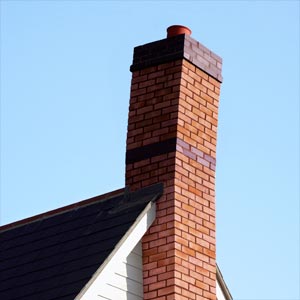 Curves or bending in brick masonry chimneys are common on older homes and may not be evidence of actual chimney settlement or movement.
Curves or bending in brick masonry chimneys are common on older homes and may not be evidence of actual chimney settlement or movement.
The characteristic of the curving chimney is that the masonry chimney has an unlined flue and the heating fuel was oil or coal containing high levels of sulfur. A curved brick flue may need repair or replacement but it’s not certain. The flue interior needs to be inspected thoroughly for damage and stability.
Chimneys lean for a variety of reasons. Weather erodes the mortar joints, a TV antennacatches the wind and stresses the masonry, as well assulfurous chemicals from fuel oil or coal exhaust attack the mortar and the flue. The latter is especially likely if the chimney lacks a ceramic flue liner. A brick chimney may curve away from its most weather-exposed side due to sulphation: a term which describes expanding brick mortar joints caused by the combination of water and sulfur or other minerals.
Curving Chimney
There are no single correct approaches for this answering this problem. However, it is advisable that the structure inspected inside and out by a licensed and registered chimney sweep. Once the inspection report is finished, thenopportunities for picking the best solution will be available soon.
Having a masonry contractor restore the chimney is appealing because it would preserve the house’s architecture, but it’s not a complete fix more about that in a moment. The procedure, though, is pretty straightforward. The contractor disassembles the chimney right down to the roof flashing and then rebuilds it, complete with new flashing.
Because rebuilding the section above the roofline does nothing to address hidden problems such as a crumbling flue, a combination of solutions that take into account both the repair above the roof and the condition of the flue are needed.
It is worth to consider putting in a full stainless-steel lining. Still another option is to put an inflatable form down the chimney and surround it with an insulating, grout-like material. (The latter costs thousands of dollars but would provide both safety and a lasting solution.)
Regardless of which path is taken, check with the town about building permits and certification of the flue. That’s important because improperly documented work can hang up the sale of the house should you ever decide to move.
